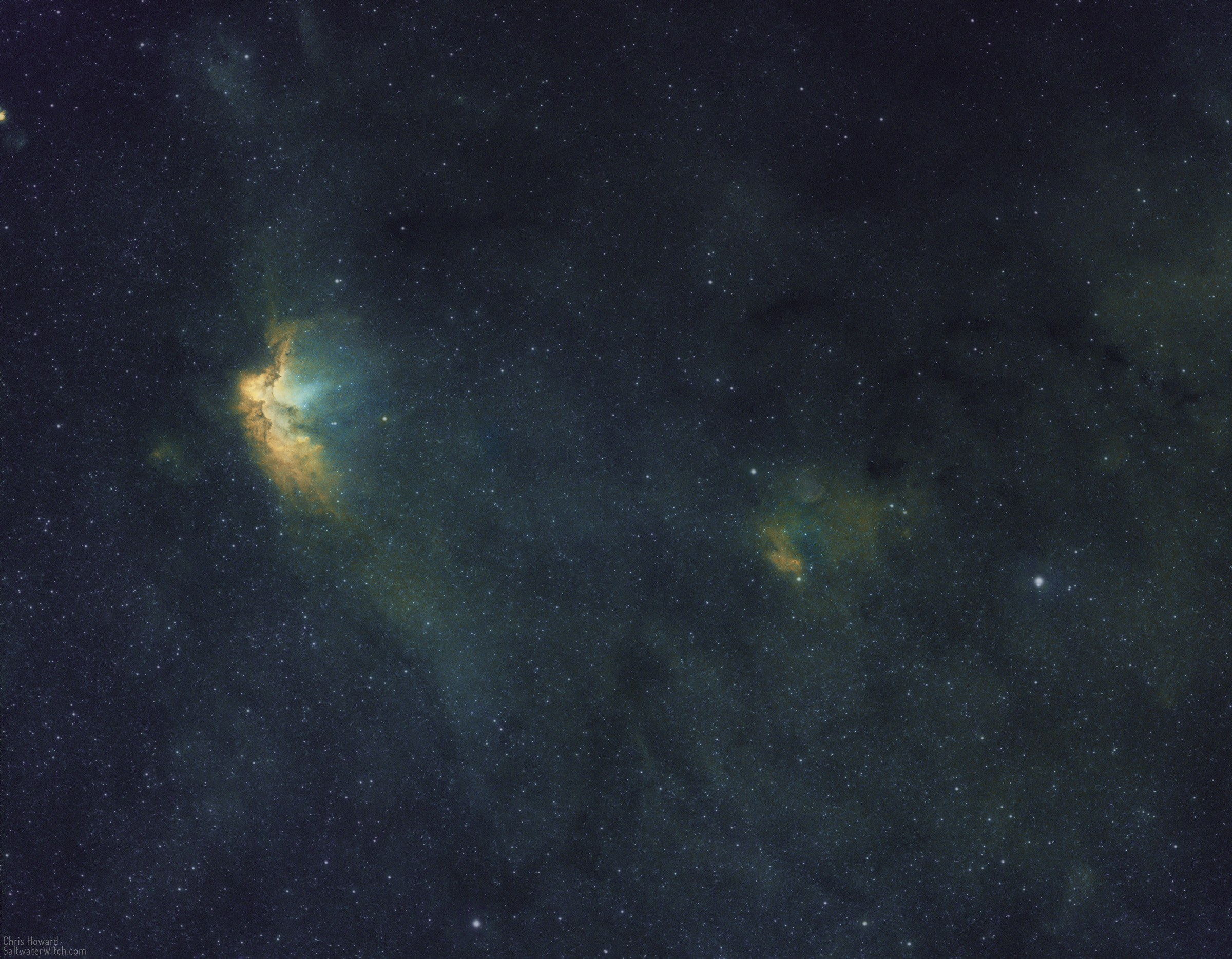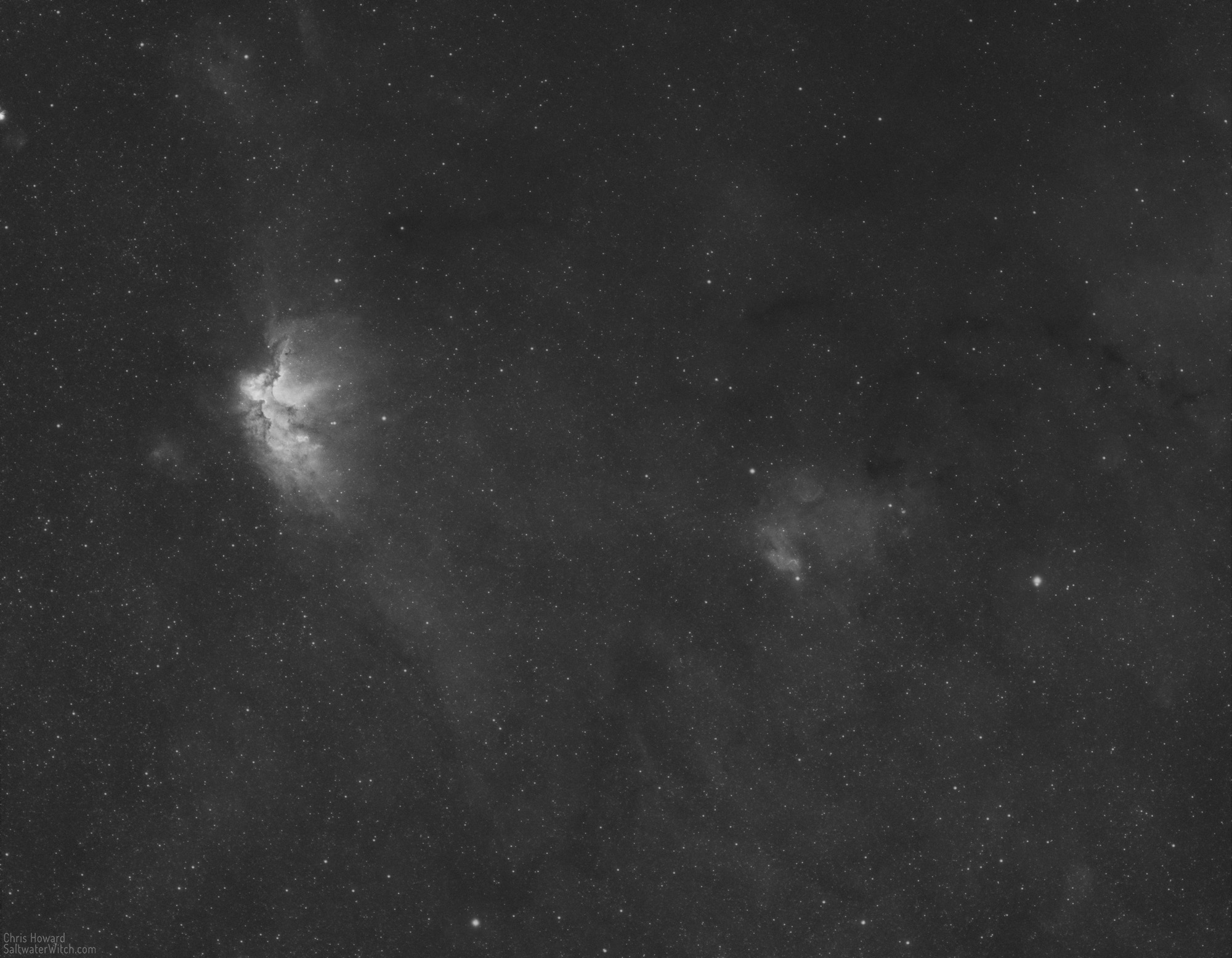Off to shoot the Wizard
September 16, 2022
NGC 7380 is an open star cluster in Cepheus, surrounded by the bright emission nebula Sharpless 142 (Sh2-142, center, left), but we all know it as the Wizard Nebula. Why? Well, because it sort of looks like a bent old dude with a pointy hat looking out over a vast expanse of nebulosity, loops of dark interstellar dust, and a spread of hot stars bathing everything in intense radiation, all of which could be mistaken for some sort of magical display. In other words, what a wizard might do. That's my guess, anyway.
Last night was also my first night out with the ZWO ASIAir Plus (astro device controller), and because the Wizard has all three bands present to some degree, hydrogen-alpha, oxygen 3, and sulfur 2, I thought I would try something new: shooting 10 subs for each filter, running autofocus for each set, and then looping through each set of three filters three times. This way I would end up with 30 sub frames for each over the course of one night, a reasonable amount of data. This would also allow me to see how the meridian flip went, how well the autofocus routines work, and more. Note: with the 3nm Antlia Pro narrowband filters, each autofocus run takes about 7 minutes, with a set of 20 second exposures—the routine needs at least 20 just get enough stars to focus with these very narrow 3 nanometer filters.
It was also a cool mid-September night and with wind gusts and "poor seeing" according to the Clear Sky Chart, the guiding with the ZWO AM5 wasn't outstanding, but good enough for 300-second exposures, never straying too far above an arcsecond.
Here's the combined narrowband result in SHO, the Hubble Palette, where Sulfur is mapped to Red, Hydrogen to Green, and Oxygen to Blue in RGB colorspace.
Here's the Hydrogen-alpha data by itself:


